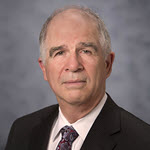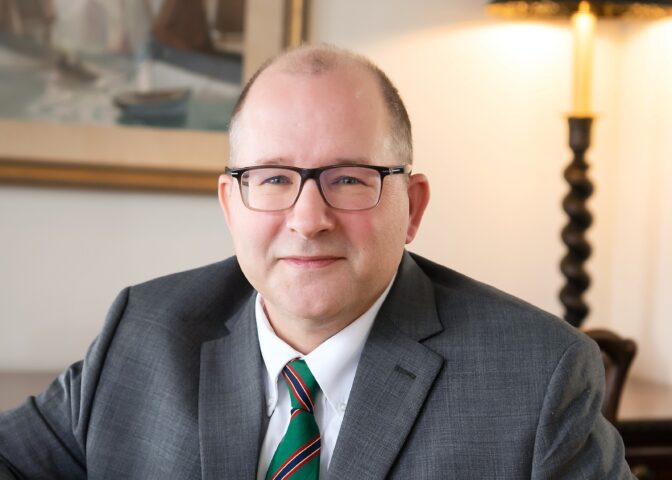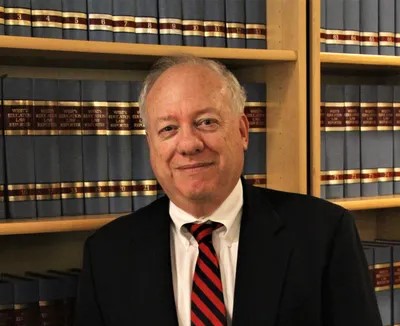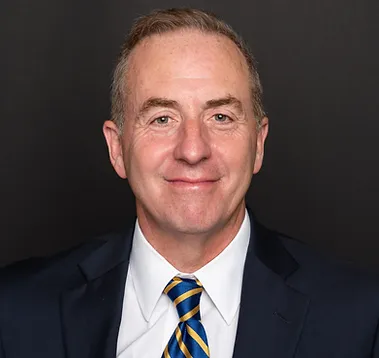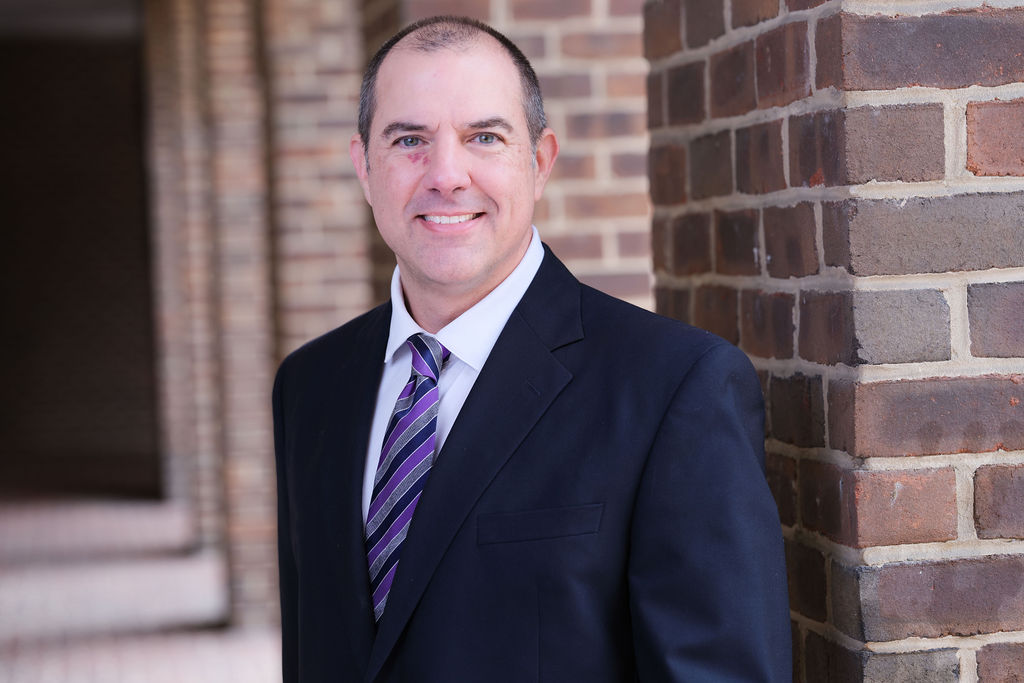In the case of In re Huber, entered May 17, 2013, the United States Bankruptcy Court for the Western District of Washington (State), on three grounds, held that an Alaska self-settled trust essentially was invalid with respect to claims of the creditors of the trust’s settlor in bankruptcy. A trust is considered self-settled if the person who settled (that is, created) the trust is a beneficiary.
First, it held that the law of Washington, where the grantor, all but one trustee and all beneficiaries resided and virtually all property was located, controlled, and that under Washington law the self-settled trust was void with respect to the settlor’s creditors. Second, it held that section 548(e) of the Bankruptcy Code (the “Code”) made the trust assets part of the settler-debtor’s estate in bankruptcy because the trust was created within ten years of the settlor’s filing of his petition in bankruptcy and because the trust was created with an actual intent to hinder, delay or defraud creditors. Third, the court ruled that because the trust was created with an intent to hinder, delay or defraud creditors, the transfers to it were voidable for under section 544 of the Code.
The first ground (applying Washington’s self-settled trust rule) was unnecessary to the ultimate conclusion that the trust assets were part of the bankruptcy estate and, therefore, distributable to the settlor’s creditors. When creating self-settled trusts, however, the case may be instructive in determining what steps should be taken to avoid having it struck down. That will be the principal focus of this article. It will also explain why Huber does not affect the ability to create a self-settled trust under Alaska law and, as occurred in PLR 200944002 (not precedent), prevent it from being included in the gross estate of the settlor for Federal estate tax purposes.
Some Background
As Huber states, any transfer to a self-settled trust (no matter where located, even overseas) by the settlor within ten years of the filing of a bankruptcy petition can be set aside by the bankruptcy court (so the assets so transferred are available for distribution to the debtor-settlor’s creditor) if the settlor, in making the transfer, had an actual intent to hinder, delay or defraud any current or future creditor. See Code Section 548(e). In Huber, the court found as a matter of law (in a summary judgment motion) that the settlor had that intent. In addition, the court ruled that the bankruptcy trustee could set aside the transfer under Code Section 544 because he had (again) made the transfer to hinder, delay or defraud a creditor and under Washington state law (where the settlor resided), such a transfer is voidable.
The application of those two grounds to void the transfer is not surprising in that the court had found that the transfer was intended to hinder, delay or defraud creditors. What is more surprising is that the court unnecessarily ruled that it would apply Washington’s statute self-settled trust law (which makes such a trust void with respect to the settlor’s creditors) rather than applying Alaska law under which the trust was formed. In fact, if the court had applied Alaska law, the result almost certainly would have been the same. Although Alaska law protects certain self-settled trusts, it does not do so with respect to any creditor whom the settlor was attempting to defraud. Because the Huber court apparently found such an intent, the trust presumably would have been entitled to no spendthrift protection under Alaska law with respect to such creditors. See Alaska Statute 34.40.110(b).
Nevertheless, it is instructive to look at the court’s reasoning in applying the Washington self-settled trust statute. The court based its conclusion that the Washington rule on self-settled trusts applied, because under Restatement (Second) Conflict of Laws Section 270, a trust is not “valid” if it is invalid under the law of the state that has the most important interest in the matter before the court. Specifically, the court concluded that the application of Alaska law violated a strong public policy of Washington and concluded that the trust has its most significant relationship to Washington as to the matter at issue. In order to reach the conclusion that Washington had the most significant relation to the matter at issue, the court was supposed to reach that conclusion based upon the principles stated in Section 6 of the Restatement.
These principles in Section 6 are:
- The needs of the interstate and international systems,
- The relevant policies of the forum,
- The relevant policies of other interested states and the relative interests of those states in the determination of the particular issue,
- The protection of justified expectations,
- The basic policies underlying the particular field of law,
- Certainty, predictability and uniformity of result, and
- Ease in the determination and application of the law to be applied.
In two prior cases, In re Portnoy, 201 B.R. 685 (Bankr. S.D.N.Y. 1996), upon which the Huber court relied, and In re Brooks, 217 B.R. 98 (Bankr. D. Conn. 1998), both involving non-US self-settled trusts, the courts applied the law of the state (in the United States, of course) where the settlor resided to strike down the trusts as invalid, rather than applying the law of the foreign (non-US) jurisdiction under which the trusts where formed. Under the analysis made, both the Portnoy and Brooks courts held that the domestic jurisdiction (that is, the state in the United States) had a greater interest in the matter at issue than did the foreign jurisdiction.
Huber, of course, did not involve a non-US jurisdiction but that of a sister state (Alaska). So the precise reasoning used by the predecessor bankruptcy courts was lacking. Indeed, the court in Huber failed to specify what the “matter at issue” was. Presumably, it was whether the Washington rule on self-settled trusts or the Alaska rule on that would apply (even though, as pointed out, the result likely would have been the same under the law of each state). In any case, the Huber court fails to discuss the Section 6 principles at all. The only hint as to why it held that Washington had the greater interest in the matter at issue was based upon what the court views a “minimal” contacts with Alaska and more contacts with Washington. The court indicated that the only two contacts with Alaska were that a minor part of the assets (a $10,000 certificate of deposit) was in Alaska (all of the rest of the assets, according to the court, was in Washington) and only one of three trustees were Alaskan (and the court stated that the Alaska trustee did “nothing to become involved with the perseveration and/or protection of the assets of the Trust and was acting merely in the nature of a straw man”).
Even the statements by the court about the contacts are questionable, as explained in detail in Blattmachr & Blattmachr, “Huber: Alaska Self-Settled Trust Held Subject to Claims of Creditors of the Grantor-Beneficiary,” LISI Asset Protection Planning Newsletter #225 (May 22, 2013) at http://www.leimbergservices.com.
But the key question is: how does one create a self-settled trust that will be respected by the United States Bankruptcy Court?
Don’t Start It as a Self-Settled Trust
What Makes a Trust Self-Settled
A trust is regarded as “self-settled” (that is created by the trust’s settlor for his or her own benefit) essentially to the extent that a trustee must or may make distributions to the settlor. For example, Comment f to Section 60 of the Restatement (Third) of Trusts which provides that creditors of the settlor may attach the maximum interest the settlor retained in the trust or the trustee could transfer to the settlor.
Allow Distributions for the Settlor Only By the Exercise of a Non-Fiduciary Power
If the only way the settlor could receive property is by the exercise of a power held in a non-fiduciary capacity, attachment by the settlor’s creditors should not apply because, as indicated, a trust is regarded as self-settled to the extent that the settlor has retained an interest in the trust (e.g., entitlement to income) or may receive distributions in the exercise of discretion held by a trustee. For example, suppose a property owner creates a trust for her son and grants him a lifetime special power of appointment under which he may appoint the property in the trust to anyone (other than himself, his estate or creditors or the creditors of his estate) at any time. Unless there is a “deal” that he would exercise it in his mother’s favor, the mere possibility that the son might exercise the power of appointment at some time in her favor would not seem to make it subject to the claims of his mother’s creditors by reason of it being a self-settled trust.
Allow the Power to be Exercised Only with Non-Adverse Party Consent
It seems further that the son’s power of appointment could be made exercisable only with the consent of a non-adverse trustee, by way of example, without making the trust self-settled. It also seems that the power of appointment could be held by a non-beneficiary. Indeed, Alaska law provides that, unless the instrument specifies otherwise, a trust protector is not a fiduciary and is not deemed to be acting in a fiduciary capacity. AS 13.36.370(d). So, it seems that the settlor could name a trust protector, to act in a non-fiduciary capacity, who could have the power to add the settlor to the class of beneficiaries. Unless the protector did so, the trust would not appear to be self-settled. Indeed, it seems a trust protector, acting in a non-fiduciary capacity, as it the case in Alaska, could direct the distribution of assets to the settlor. In other words, the trust protector would hold the special power of appointment. It might be better “cosmetically,” however, not to call the person who holds the power of appointment and who is not a beneficiary a “trust protector.” Perhaps, simply calling that person the sole member of the Distribution Committee or Power of Appointment Committee might be preferable. In any case, the trust agreement should specify that the power holder is not holding and need not exercise the power under a fiduciary capacity.
Exercise the Power to a Different Trust Someone Else Creates for the Settlor
Another step, which may provide even more protection, would be for someone other than the settlor of the Alaska trust to create a “new” trust for the settlor and modestly fund it. If the grantor of this new trust was not a beneficiary of the first trust and the settlor of the first trust did not provide the assets with which the new trust is created, the new trust should not be consider self-settled. The person who holds the power of appointment of the first trust could exercise it in favor of the new trust. As long as there was no prearrangement, it seems the new trust should not be considered self-settled. Allowing a significant amount of time to pass before the new trust is created and the power exercised should go far in sustaining that result. Also, it probably would be preferable if the trustee of the old trust were not the trustee of the new trust (from which distributions could be made to the settlor).
Permit Only Acquisitions of Property for the Temporary Use of the Settlor.
A trust may not only provide for distributions of property to be made to its beneficiaries but also may permit the trust to acquire assets for the use of the beneficiaries. For example, it is not uncommon for a trust to acquire homes, recreational property or art and to allow those assets to be used by one or more of the beneficiaries. If the trust permits that but only allows the use to be temporary (that is, the trustee can terminate the use by direction or by selling the asset), it seems that a creditor of the settlor cannot acquire something of significant value. As mentioned above, the creditors can only attach the assets to the extent the trustee could distribute them to the settlor. Because, under temporary the “use of assets” structure just discussed, the trustee cannot distribute the assets to the settlor and may make them available for the settlor’s use only temporarily.
Because, in many cases, use of property is a significant benefit (e.g., providing a home), any trust of which the settlor is or may become a beneficiary might provide expressly that, at least with respect to the settlor, the trustee may not make any distribution to the settlor but only permit the settlor temporarily to use assets.
Similarly, the trust might provide that the trustee can loan property or cash to the settlor at the so-called “applicable Federal rate” or AFR interest rate determined under Section 1274(d) of the Internal Revenue Code of 1986, as amended, with accrued interest only and only for a term specified by the trustee. Even though it is not certain that the “safe harbor” AFR interest rules of Section 7872 of the Internal Revenue Code of 1986, as amended, apply to loans from trusts, it may be that this possibility of a loan is not attachable by a creditor of the settlor. Perhaps, the trust should provide that the interest must be at market rate interest and can be made only if it is repayable upon demand by the trustee.
As long as the trust is a so-called “grantor trust” (that is, one the income of which is attributable directly to the grantor pursuant to Section 671 of the Internal Revenue Code of 1986, as amended), there should be no income tax effect either of the use of assets by the settlor or by a loan to him or her from the trust.
Permit the Power to be Exercised Only If the Settlor Is Not Married
A further step, at least for a happily married person is to create the trust for his or her spouse and for the trust to allow the power of appointment to be exercised only if and when the grantor of the trust is not married to and living with another. For many, whether the trust benefits the spouse or the settlor will not matter. As indicated, spouse for this purpose could be defined as the person to whom the settlor is married to and living with at the time in question. Cf. Estate of Tully, Sr. v. United States, 528 F.2d 1401 (Fed. Cir. 1976) and Rev. Rul. 80-255, 1980-2 CB 273. If the couple separates or the spouse dies, then and only then could the special power of appointment held by a non-fiduciary be exercised.
Use Decanting to Grant the Special Power of Appointment
Under the law of about 20 states (including Alaska), a trustee can pay the trust assets to another trust (called an act of “decanting”), including to grant one or more beneficiaries a special power of appointment. So the original trust might not grant anyone a power of appointment. Yet, later, at an appropriate time, the trustee could decant and grant one or more of the beneficiaries a special power of appointment which the beneficiary could exercise to provide benefits to the settlor (such as adding the settlor to the class of beneficiaries of the trust or appointing property to another trust someone else has created for the settlor).
Adverse Tax Effect by the Exercise of the Special Power of Appointment?
The IRS has indicated that a beneficiary who exercises a special power to add someone to the class of discretionary beneficiaries could be treated as making a gift although the IRS has refused to say how such a gift would be valued. It seems that, if the beneficiary who holds the special power is only eligible and not entitled to any distribution, the value of any gift deemed made by the exercise of the power should be nil. (“The value of the gift is a question of fact….” Id. Cf. Rev. Rul. 75-550, 1975-2 CB 357 (“In this case, the trustee’s discretionary power to invade corpus of the residuary trust for the benefit of B and the children can occur only if such diversion is necessary for their ‘comfort, support, hospital or medical expenses.’ Thus, the power of invasion is impliedly limited by a definite standard. . . . In addition, as of the date of transferor A’s death, the likelihood of any invasion of the trust corpus on behalf of the children was not so remote as to be negligible. Accordingly, B’s life estate in the residuary trust was capable of valuation….”). PLR 200243026 (not precedent).
In any case, if the power of appointment is held by a beneficiary and the trustee may make distributions in favor of him or her only pursuant to an ascertainable standard relating to health, education, maintenance and support, the exercise of the power of appointment by the beneficiary in favor of another should not be a gift at all.
Name Only Alaska Trustees
Other steps also should be taken on the basis of Huber. For example, having only a trustee in the state where the trust will be settled (e.g., Alaska, Delaware, Nevada) should help make it “smell” more like a trust that is actually situated there. If the settlor wants someone else to manage the assets, he or she could form a partnership, give the general (controlling) partnership interest to a trust located, perhaps, in the same state but one from which the settlor can never receive a distribution and would have the trustee be the person whom the settlor wishes to manage the assets (which would now be in the partnership). The limited partnership units would be transferred to the trust of which the settlor could possibly become a beneficiary.
It also seems appropriate not to name someone who resides in the same state as the settlor to be the trust protector. That would seem to reduce the jurisdiction of the settlor’s state over the trust.
Situate the Assets in Alaska
The Huber court contended that the only asset the trust held that was in Alaska was a $10,000 certificate of deposit and all other assets were in Washington. Based upon general principles, the court may be wrong as it seems the other assets were shares of stock of interests in a limited liability company, both of which are intangibles. The law generally provides that an intangible is deemed located where its owner resides. See, for example, the excellent discussion in Schwab & LaPiana, “The Income Taxation of New York Resident Trusts,” 68 N.Y.S. B.J. 30(March/April 1996). Of course, in Huber, there were three trusts only one of which was in Alaska and the court found that the Alaska trustee did nothing to preserve the trust and was a mere “straw man.” So, perhaps, on a “head counting” the court decided even the intangibles were located where the two other non-Alaska trustees resided. In any event, having only a trustee or trustees on the state where the trust will be formed and administered should help to overcome the type of contention the Huber court made.
If one wanted to go even further, the settlor could fund the trust with a sufficient large enough CD so that the trust could use its cash to buy assets from the settlor (and without income tax in accordance with Rev. Rul. 85-13, 1985-1 CB 184). Since the court conceded the CD is an Alaska sited asset, buying intangibles from the settlor using the Alaska CD would seem to keep the trust assets Alaskan.
Have an Alaska Attorney Participate in the Trust Preparation
The Huber lists as one of the Washington contacts the fact that the lawyer who drafted the Alaska trust was in Washington. Hence, a lawyer in the jurisdiction whose law is to govern the trust should be engaged to participate in the preparation of, or at least review, the trust document.
Make the Beneficiaries Alaskans
It also might be possible to make the initial beneficiaries of the trust be other trusts created under Alaska law (which trusts might be for individual residents of other states). It is common for one trust to be the beneficiary of another trust. See, e.g., Treas. Reg. 1.643(c)-1(first sentence) (“An heir, legatee, or devisee (including an estate or trust) is a beneficiary.” (Emphasis added.) Although a court might “look through” the beneficiary trusts to find non-Alaskans, using Alaska trusts as the initial beneficiaries may also help to strengthen the Alaska contacts. As long as all of the trusts are grantor trusts for income tax purposes, no additional income tax reporting would be required. See Blattmachr & Crawford, “Grantor Trusts and Income Tax Reporting Requirements: A Primer,” Probate Practice Reporter, Vol. 13, No. 5, May 2001.
Why Huber Does Not Affect Estate Tax Exclusion for a Self-Settled Trust
The tax law is consistent with respect to self-settled trusts: if the assets in the trust are subject to the claims of the settlor’s creditors under the law that governs the trust it is included in the settlor’s estate and is not considered a completed gift. However, if it is not so subject, it will not be included merely because it is self-settled as long as the settlor is not entitled to the income of the trust and may not control the beneficial enjoyment of the trust property but, in any case, the transfer will constitute a completed gift (and, therefore, may be subject to gift tax when made).
Any transfer during lifetime, even if not to a self-settled trust or any other trust, may remain subject to the claims of the creditors of the settlor as a fraudulent one. In other words, property given outright (not in trust) to someone else may be subject to the transferor’s creditors if they can establish the gift was a fraudulent transfer. Although states impose a statute of limitations against such a claim, usually the state provides an additional time if the transfer was “secret.” For example, under Florida Statute Sec. 726.110, a creditor of a transferor may challenge as fraudulent an asset transfer to avoid pre-existing creditors for one year after the creditor became aware of or reasonably could have been discovered the transfer, under certain conditions. In other words, under the Florida law, certain creditors may challenge a transfer, no matter how ancient, for a period of one year after the creditor’s actual or constructive discovery of the transfer.
However, the fact that the transfer could be challenged as fraudulent at any time does not render the gift incomplete. The IRS has developed a logical rule as set forth in Rev. Rul 76-103, 1976-1. CB 293: if the self-settled trust is created and administered under the law of a state where the creditors of the settlor can attach the trust assets, the gift to the trust is incomplete; however, if and when the trust is moved to a state where the settlor’s creditors can no longer attach the trust assets, the transfer will be completed for gift tax purposes. A similar rule applies for estate tax inclusion purposes. See, e.g., Rev. Rul 2004-64, 2004-2 C.B. 7.
In Estate of German v. United States, 7 Ct. Cl. 641 (1985), for example, Mrs. German, a Florida domiciliary, created a trust under Maryland law. Mrs. German was not a trustee, but her son was one of the trustees and lived in Maryland. The trustees were authorized, in their discretion, to distribute income and corpus of the trust to her, although only with the consent of an adverse party (that is, another beneficiary). In holding that the trust was not included in her gross estate, the court stated, “[T]he narrow issue to be decided herein is as to the extent of decedent’s creditors’ rights with respect to the trust income and assets under Maryland law. *** Defendant [IRS] has not established that under Maryland law creditors of the settlor could have reached the trust income or principal of her discretionary trusts up to the time of her death.” The court, therefore, held that the trust assets were not in Mrs. German’s gross estate for Federal estate tax purposes. Of course, it is possible that a creditor might have obtained jurisdiction over the trust and/or Mrs. German in some other jurisdiction and successfully been able to attach the trust assets, but that possibility was not sufficient to cause the trust to be included in her gross estate.
The test the IRS has developed and the courts seem to follow is that there will be estate tax inclusion but no completed gift where the “grantor [can]…effectively enjoy the trust income by relegating [his or her] creditors to the trust for settlement of their claims.” Rev. Rul. 76-103. (Emphasis added.) Hence, the mere possibility of attachment, without the settlor’s direct ability to relegate his or her creditors to the trust, is insufficient to render the gift incomplete and the trust included in his or her estate.
Hence, although Huber continues to follow the lead of Portnoy and Brooks that some creditors may attach the trust assets in some cases if the settlor winds up in bankruptcy court, that possibility is insufficient to change the long standing rule on gift completion and estate tax inclusion with respect to self-settled trusts.
Summary and Conclusions
Nothing in life is certain. And that certainly is true for asset protection. Although the bankruptcy court struck down a transfer to an Alaska self-settled trust, its finding that the transfer was intended to hinder, delay or defraud creditors means it should be struck down, regardless of the trust situs.
Even though the court found that the Washington self-settled trust law should apply rather than that of Alaska, the fact that the court did not adopt a blanket rule that no one from a state that does not protect any self-settled trust can get asset protection for such a trust created under the law of another means that self-settled trusts may still provide asset protection when “properly” created.
Perhaps, the greatest protection is to create a trust that is not self-settled but for the benefit of other family members, granting someone in a non-fiduciary capacity the power to add others (including the settlor) to the class of beneficiaries or to pay it over to another trust someone else has created for the settlor. In addition, based upon the apparent analysis of the Huber court, having only Alaska trustees, having an Alaska lawyer participate in the drafting or review of the trust agreement, and having assets situated in Alaska should substantially increase the chances of the trust providing asset protection.
In any event, an Alaska self-settled trust may still be used, as it was in PLR 200944002 (not precedent), to avoid inclusion of the trust assets in the settlor’s gross estate for Federal estate tax purposes.










































